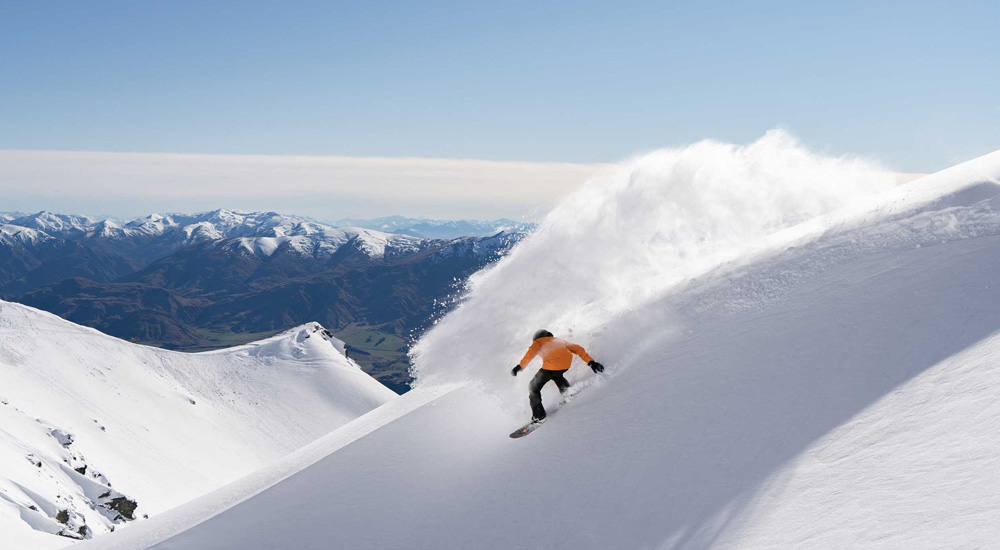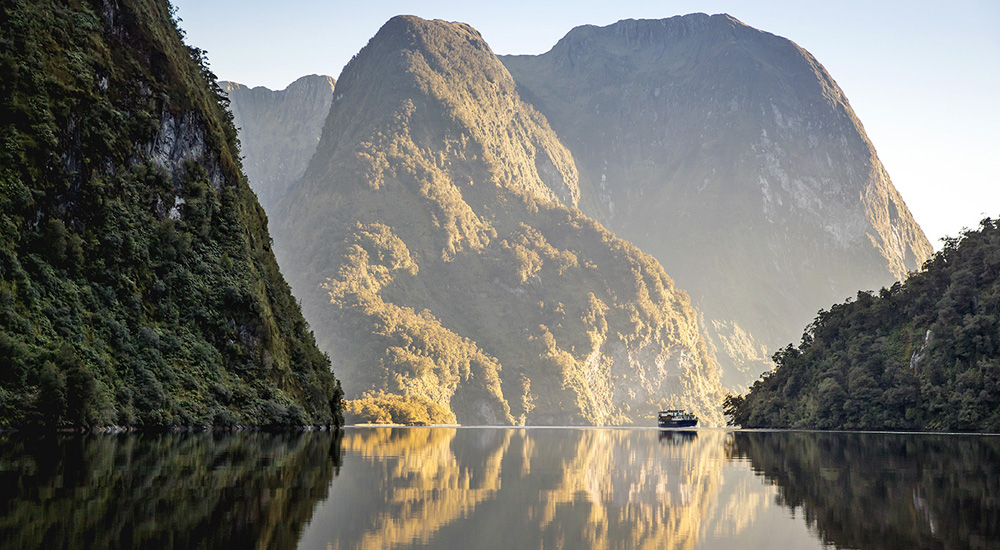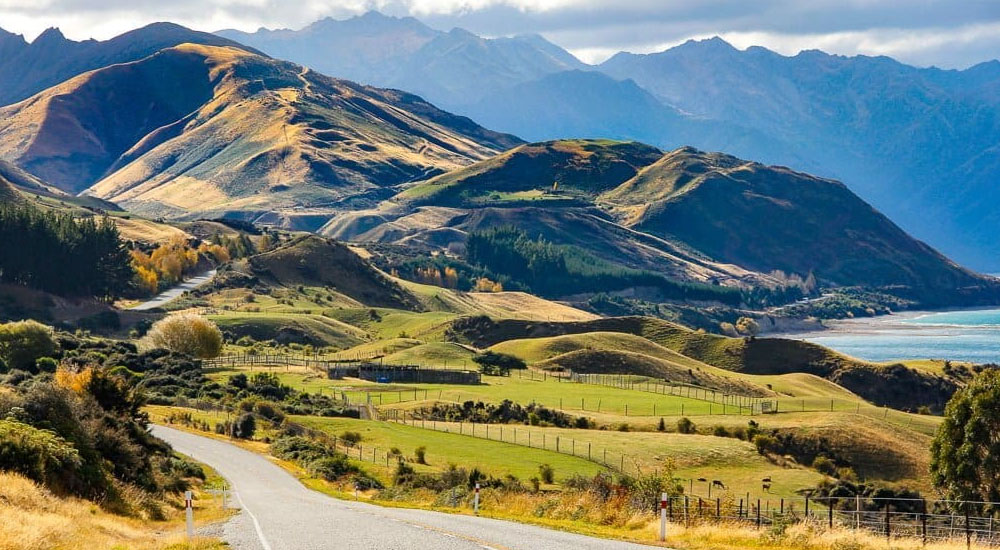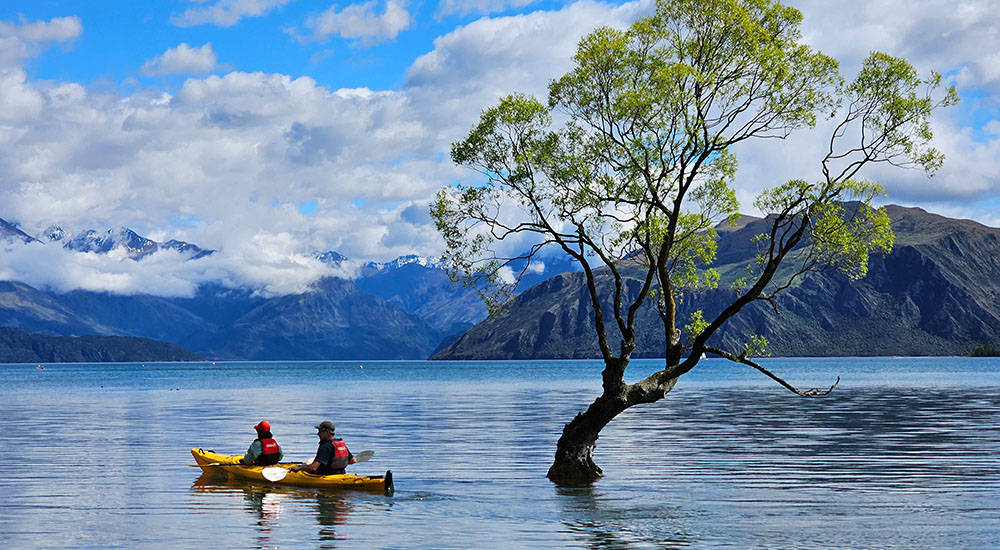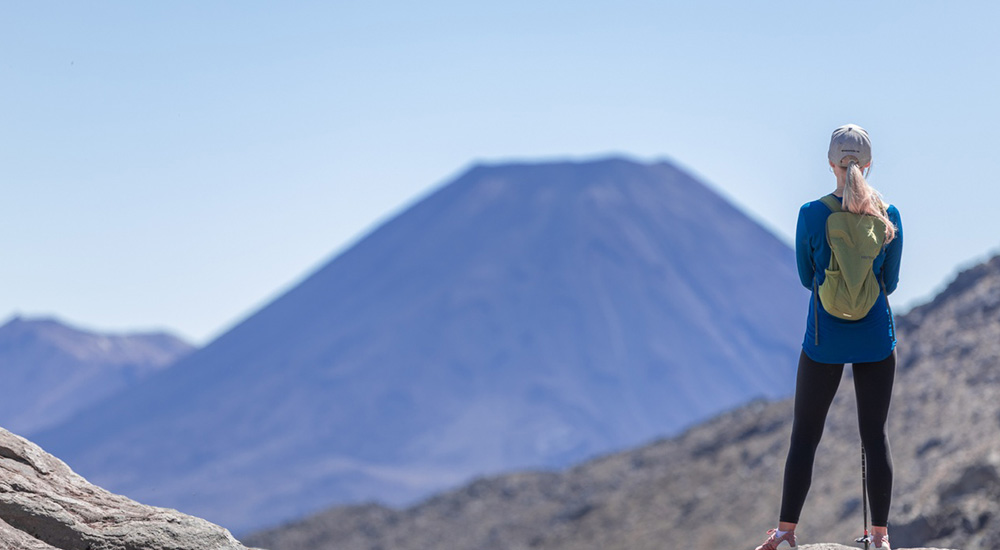The Best Wildlife Experiences in New Zealand
Hey nature lovers, Phil Boorman here, ready to take you on a walk on the wild side! New Zealand isn’t just about stunning mountains and lakes – it’s also a haven for some of the most unique and fascinating wildlife on the planet. If you’re keen to get up close and personal with amazing creatures in their natural habitat, then you’ve come to the right place.
From the ocean depths to the mountain tops, New Zealand offers incredible wildlife encounters that will stay with you long after you’ve left. Whether you’re hoping to swim with dolphins, watch whales breach, or catch a glimpse of the elusive kiwi bird, I’ve got you covered. So, let’s dive in and discover the best wildlife experiences New Zealand has to offer!
Skip Ahead:
- Marine Encounters: Whales, Dolphins, and Seals
- Birds of a Feather: Native Birds and Bird Sanctuaries
- Nocturnal Wonders: Glowworm Caves and Kiwi Spotting
- Penguins on Parade: Penguin Colonies and Viewing Tours
- Conservation in Action: Wildlife Sanctuaries and Eco-Tourism
- Tips for Ethical Wildlife Encounters
- Related Questions
New Zealand’s natural beauty is a playground just waiting to be explored by your family. From pristine beaches and lush forests to majestic mountains and enchanting caves, there’s an outdoor adventure for every age and interest. Let’s dive into some of the most unforgettable experiences that will connect your family with the wonders of nature.
Whale Watching in Kaikoura
Kaikoura, whose name translates to “meal of crayfish” in Māori, is a coastal town on the South Island renowned for its incredible marine life and dramatic scenery. With the backdrop of the snow-capped Kaikoura Mountains plunging into the Pacific Ocean, it’s arguably one of the most picturesque towns in New Zealand. But its beauty isn’t just skin deep; Kaikoura’s deep waters are a haven for a remarkable variety of whales, making it one of the best whale watching destinations in the world.
Giant sperm whales live here year-round, and you might also see migrating humpback whales, orcas, and even the rare blue whale.
The most common way to see whales in Kaikoura is on a boat tour. These tours typically last 2-3 hours and offer excellent opportunities to see whales up close. Or if you’re open to a unique perspective, consider taking a scenic flight over the Kaikoura coastline. You’ll get a bird’s-eye view of the whales and the stunning scenery.
Whales can be seen year-round in Kaikoura, but the best time to visit is during the warmer months (November to April) when the seas are calmer and there’s more chance of seeing other marine life.

Swimming with Dolphins in Akaroa or Kaikoura
Imagine gliding through the water alongside playful dolphins, their sleek bodies carving through the waves as they twist and turn with effortless grace. This dream can become a reality in New Zealand, where you can experience the magic of swimming with dolphins in their natural habitat. Two of the best places for this incredible encounter are Akaroa Harbour on the South Island and the coastal town of Kaikoura, also on the South Island.
Akaroa Harbour is a fantastic place to swim with dolphins, especially the Hector’s dolphin, the world’s smallest and rarest marine dolphin. These playful creatures, with their distinctive rounded dorsal fin and grey, black, and white markings, call the calm and sheltered waters of Akaroa Harbour home.
If you’re looking for a more adventurous dolphin encounter, head to Kaikoura, where you can swim with dusky dolphins in the open ocean. These acrobatic dolphins are known for their playful nature and impressive aerial displays. The rugged Kaikoura coastline, with its towering mountains and dramatic cliffs, provides a stunning backdrop for your swim.
No matter where you choose to swim with dolphins, you can expect an experience of a lifetime. You’ll join a boat tour that will take you to where dolphins are commonly found. You’ll be provided with a wetsuit and snorkeling gear to keep you warm in the water. Experienced guides will be there to provide instructions on how to interact with the dolphins safely and respectfully. Once you’re in the water, the dolphins may swim close to you, allowing you to observe their natural behavior and playful interactions.
To make the most of your dolphin swim, choose a responsible tour operator with a strong commitment to ethical wildlife interactions. Remember to respect the dolphins by avoiding touching or chasing them, and always follow the instructions of your guide. Be prepared for the cold water by wearing a wetsuit and be ready for some splashing! And don’t forget to bring a waterproof camera to capture the memories of this incredible experience. Swimming with dolphins is truly magical and will leave you with a deep appreciation for these intelligent and playful creatures.
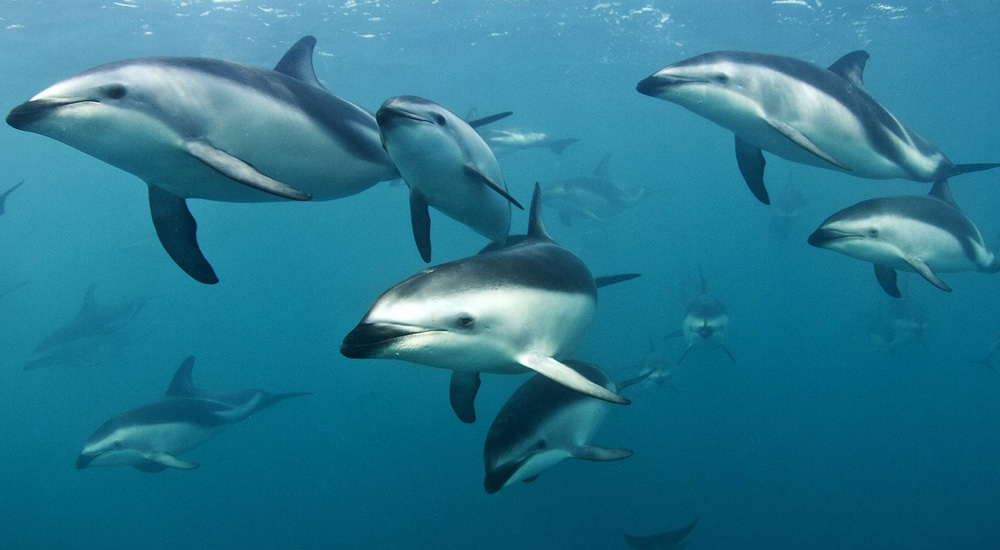
Seal Spotting in the Catlins
The Catlins, a rugged and remote region tucked away on the southeastern coast of the South Island, is one of my favourite places to escape the crowds and connect with nature. It’s a place where the land meets the sea in dramatic fashion, with towering cliffs, hidden coves, and windswept beaches. But it’s not just the scenery that draws me to the Catlins – it’s the chance to encounter New Zealand fur seals in their natural habitat. These playful and charismatic creatures are a joy to watch, whether they’re basking on the rocky shores, frolicking in the waves, or curiously watching you from a safe distance.
I’ve spent many happy hours exploring the Catlins coastline, and I’ve found several spots that are particularly good for seal spotting. Waipapa Point is a popular breeding ground for New Zealand sea lions, and you might also spot fur seals there. Nugget Point, with its iconic lighthouse perched on a rocky outcrop, is another great place to see fur seals, especially during pupping season (November to January). Surat Bay and Cannibal Bay are also known for their resident seal populations.
Whenever I’m in the Catlins, I always make a point of visiting these spots and spending some time observing these fascinating marine mammals. It’s a reminder of the wild beauty that still exists in our world and the importance of protecting these creatures and their habitats. Just remember to keep a respectful distance and avoid disturbing them – they’re wild animals, after all. By following these guidelines, you can enjoy a memorable and responsible wildlife encounter in one of New Zealand’s most scenic and unspoiled regions.
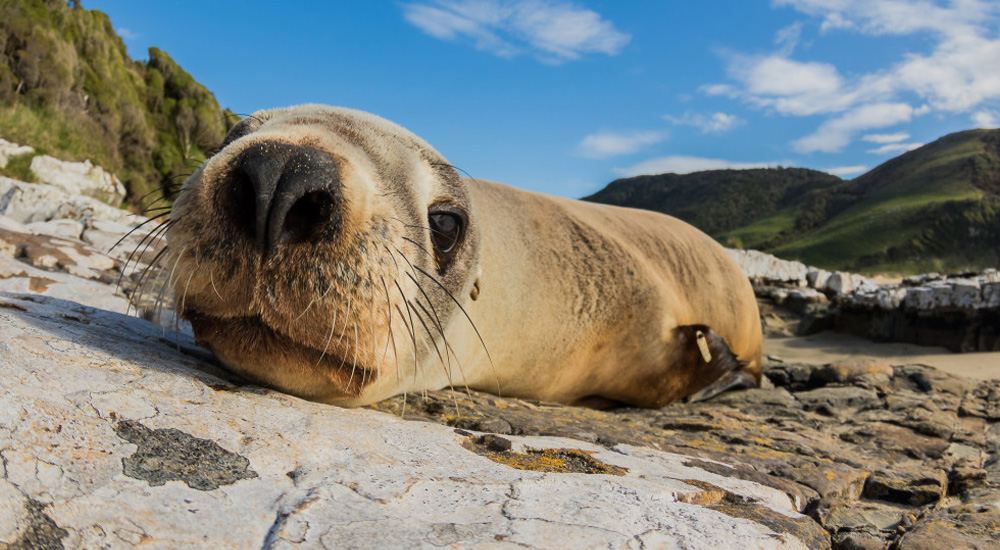
Visit Zealandia Ecosanctuary in Wellington
Zealandia Ecosanctuary, nestled in the heart of Wellington, is a truly remarkable place. I’ve been fortunate enough to visit a few times, and it always leaves me feeling inspired. It’s amazing to see how this once-degraded valley has been transformed into a thriving sanctuary for New Zealand’s native wildlife. As you wander through the lush forest and wetlands, you’ll feel like you’ve stepped back in time to a world where native birdsong fills the air. Keep your eyes peeled for the elusive kiwi, the colorful kaka parrot, and the takahe, a flightless bird that was once thought to be extinct. You might even spot a tuatara basking in the sun or hear the melodic calls of tui and bellbirds echoing through the trees.
Zealandia offers a variety of ways to experience its natural wonders. I highly recommend joining a guided tour to learn more about the sanctuary’s conservation efforts and the fascinating stories behind the wildlife you encounter. If you’re feeling adventurous, embark on a night tour for a chance to see kiwi birds in their nocturnal habitat. It’s an experience you won’t soon forget! Zealandia is a testament to the power of ecological restoration and a must-visit for any nature lover visiting Wellington.
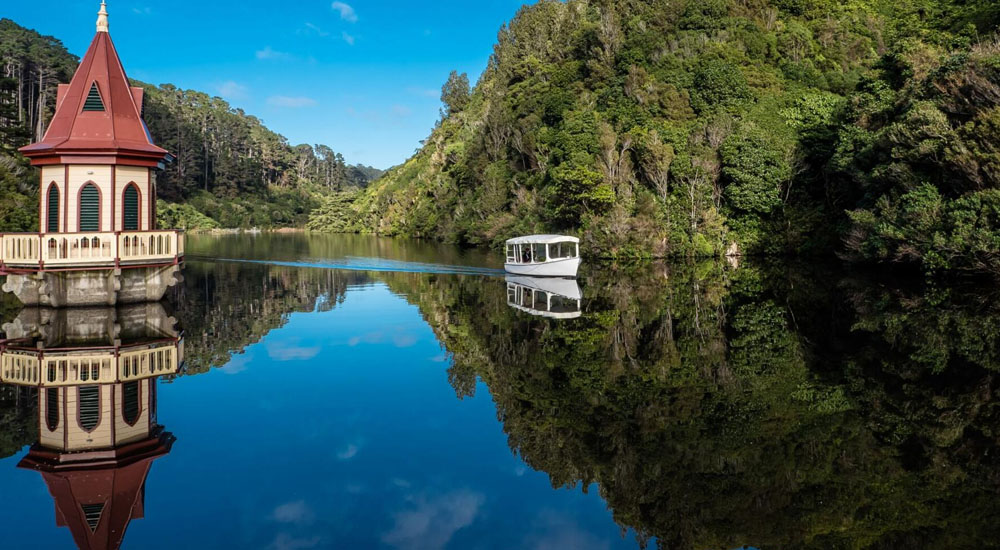
See the Royal Albatross in Dunedin
Dunedin holds a special place in my heart, not just for its charming Scottish heritage and vibrant student scene, but also for its incredible wildlife. One of the most awe-inspiring experiences you can have here is witnessing the Northern Royal Albatross in its natural habitat. These magnificent birds, with their impressive three-meter wingspan, are a true spectacle to behold.
Head to the Royal Albatross Centre at Taiaroa Head, on the Otago Peninsula, and you’ll find yourself at the only mainland breeding colony of Royal Albatross in the world. It’s a truly special place. I remember my first visit vividly – watching these majestic birds soar effortlessly above the rugged coastline, their white plumage contrasting against the deep blue of the ocean. It was a sight that took my breath away.
The Centre offers guided tours that take you to an exclusive observatory where you can observe the albatross up close. You’ll learn about their fascinating life cycle, from their elaborate courtship rituals to the challenges they face in raising their young. It’s a truly educational and inspiring experience that will leave you with a deep appreciation for these incredible birds. If you’re a wildlife enthusiast or simply looking for a unique and memorable experience in Dunedin, I highly recommend a visit to the Royal Albatross Centre.
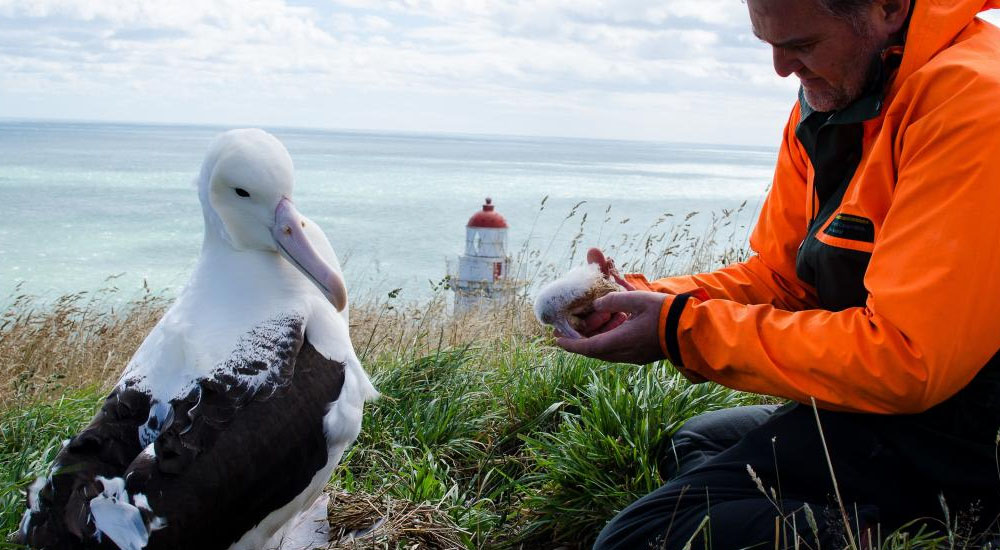
Go Birdwatching in Abel Tasman National Park
Abel Tasman National Park, with its golden beaches, turquoise waters, and lush native forests, is a slice of paradise on the South Island. But it’s not just the scenery that makes this park so special – it’s also a fantastic place to experience the unique birdsong of New Zealand. I love exploring the park’s walking trails, listening to the melodic calls of tui, bellbirds, and kereru (wood pigeons) echoing through the trees. It’s a symphony of nature that always brings a smile to my face.
If you’re keen on birdwatching, Abel Tasman is a great place to spot a variety of native species. Keep your eyes peeled for the fantail, with its distinctive fan-shaped tail and energetic flitting, or the grey warbler, a tiny bird with a surprisingly loud song. You might even catch a glimpse of the elusive kingfisher, a flash of blue and green as it darts along the waterways.
For a truly immersive birdwatching experience, I recommend taking a kayaking trip along the coast. Paddling through the clear waters, you’ll have a unique perspective on the birdlife, and you might even spot some seabirds like shags and gulls. Whether you’re a seasoned birdwatcher or simply enjoy the sounds of nature, Abel Tasman National Park is a must-visit destination for a truly enriching experience.
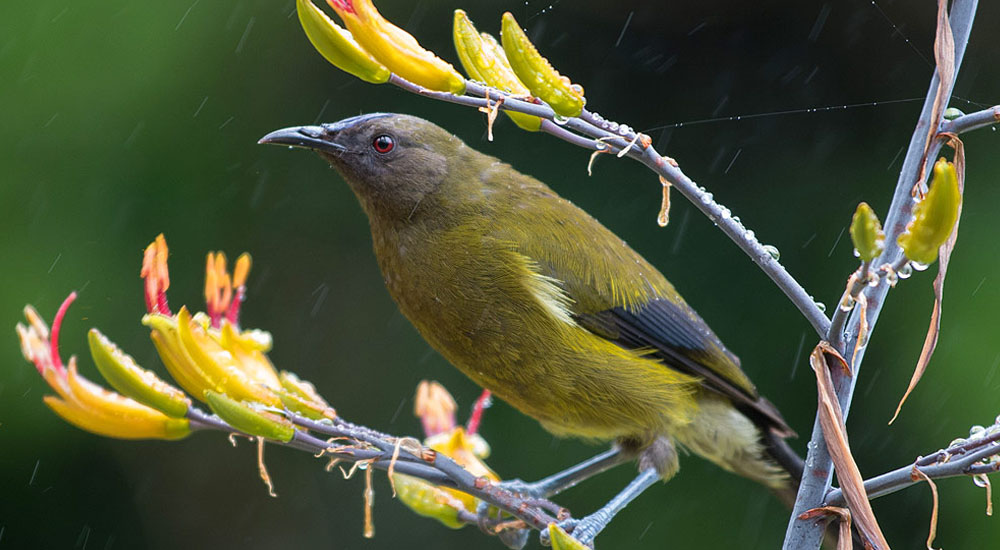
Discover Glowworm Caves in Waitomo
The Waitomo Caves are a must-see for any visitor to New Zealand, and I always make a point of taking friends and family there when they come to visit. Stepping into these subterranean wonderlands is like entering another world entirely. The highlight for me is undoubtedly the Glowworm Grotto, where thousands of tiny glowworms illuminate the darkness, creating a mesmerizing spectacle that resembles a starry night sky.
I remember my first time experiencing this – gliding silently through the cave on a boat, surrounded by the ethereal glow of these tiny creatures. It was truly magical. The silence amplifies the experience, allowing you to fully appreciate the beauty and wonder of this natural phenomenon.
But the Waitomo Caves offer more than just glowworms. You can explore vast caverns adorned with intricate limestone formations, marvel at cascading waterfalls, and learn about the fascinating geological history of the region. Whether you’re a nature enthusiast, an adventure seeker, or simply looking for a unique and awe-inspiring experience, the Waitomo Caves are sure to leave a lasting impression.
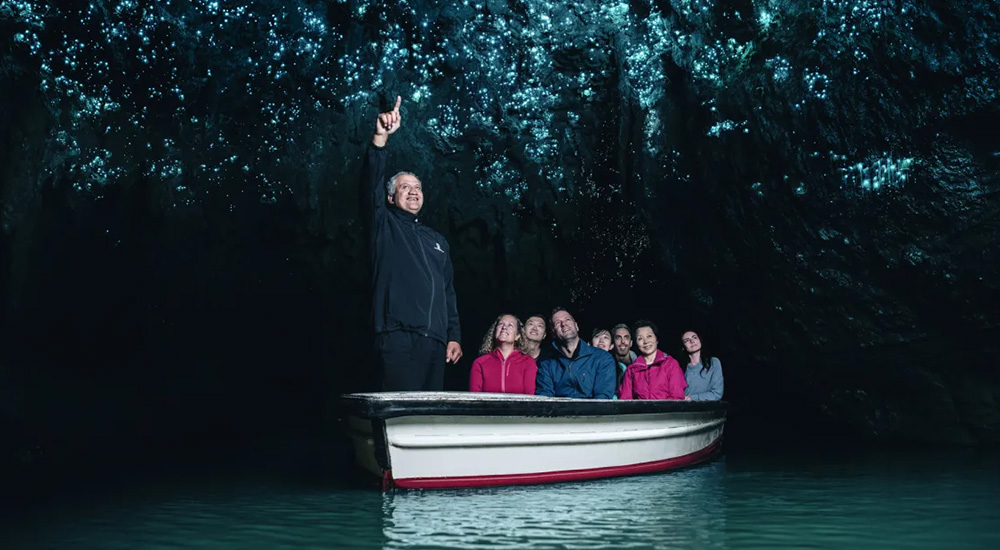
Go Kiwi Spotting on Stewart Island
Now, if you’re really keen on seeing a kiwi, Stewart Island is the place to be. It’s a haven for these elusive birds, and your chances of spotting one in the wild are much higher here than on the mainland. I’ve been lucky enough to visit Stewart Island a few times, and it’s always a special experience. The island has a real sense of tranquility, and the locals are passionate about protecting their native wildlife.
To increase your chances of a kiwi encounter, I recommend joining a guided night walk. Experienced guides know the best spots to find kiwi and will teach you about their fascinating behaviour and the challenges they face. Imagine standing quietly in the darkness, listening to the sounds of the forest, and then suddenly catching a glimpse of a kiwi foraging for food in the undergrowth. It’s a truly magical moment.
Of course, if you’re short on time or not able to make it to Stewart Island, you can still get up close to kiwi at the Kiwi Birdlife Park in Queenstown. This park offers a fantastic opportunity to learn about these iconic birds and see them in a nocturnal enclosure. It’s a great option for families and a wonderful way to support conservation efforts. Whether you choose to venture to Stewart Island or visit the Kiwi Birdlife Park, seeing a kiwi is an experience you won’t soon forget. It’s a reminder of the unique and precious wildlife that makes New Zealand so special.
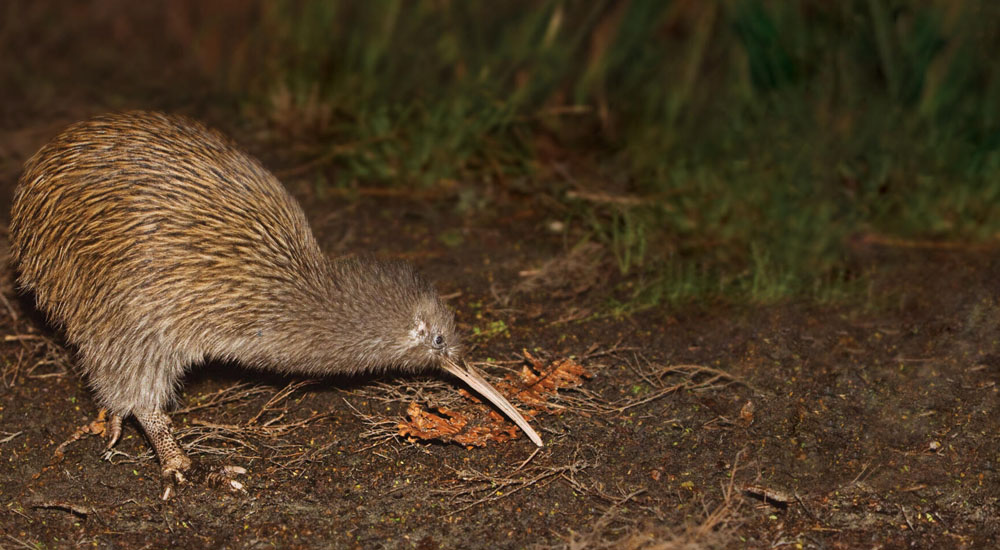
Visit the Oamaru Blue Penguin Colony
The Oamaru Blue Penguin Colony is a must-see for anyone visiting the South Island, and I always encourage people to make the trip. It’s home to the world’s smallest penguin species, the Little Blue Penguin, and it’s a truly special experience to watch these adorable creatures waddle ashore at dusk after a long day of fishing. Imagine gathering on the viewing platform as the sun sets, the anticipation building with every crashing wave. Then, suddenly, you spot them – these tiny penguins, no bigger than a football, emerging from the surf and making their way across the beach to their nests. It’s a sight that never fails to bring a smile to my face.
The colony is located right on the coast, just a short walk from the Oamaru town center, making it easily accessible. You can choose to watch the penguins from the viewing platform, or you can take a guided tour for a more in-depth experience and learn about the conservation efforts that are helping to protect these amazing birds. Just remember to dress warmly, as the evenings can get chilly, and be sure to arrive early to get a good spot. And most importantly, be quiet and respectful – these little penguins are sensitive to noise and light, so we want to make sure they feel safe and comfortable in their natural environment. Trust me, witnessing this penguin parade is an experience you won’t soon forget!
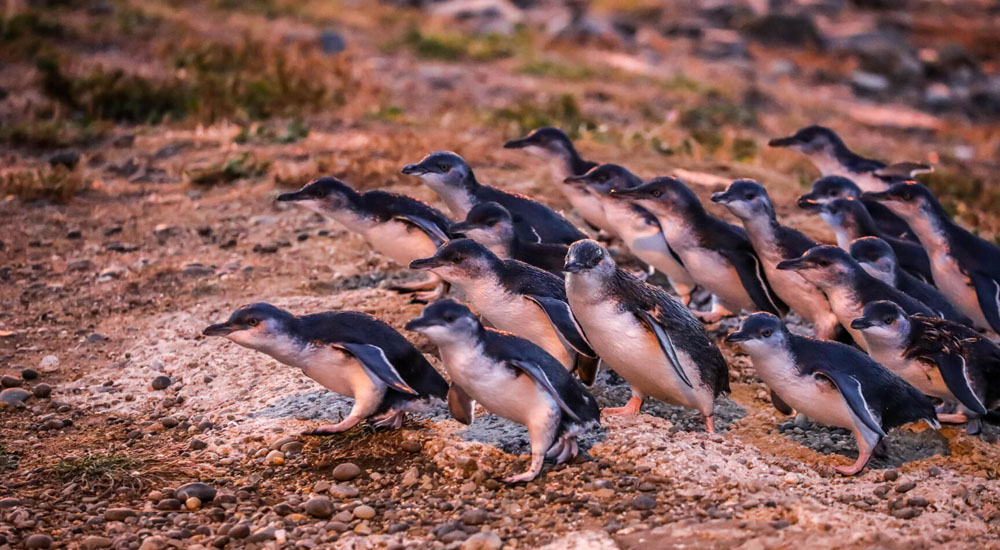
See Yellow-Eyed Penguins in Dunedin
Dunedin, with its charming Scottish heritage and stunning coastal scenery, holds an opportunity to encounter the rare and endangered Yellow-Eyed Penguin. These unique penguins, with their distinctive yellow band around their eyes and pale pink feet, are a true treasure of New Zealand’s wildlife.
I’ve had the privilege of observing these shy creatures in their natural habitat on the Otago Peninsula, and it’s an experience I won’t soon forget. Imagine walking along a secluded beach, the wind whipping through your hair, and suddenly spotting a Yellow-Eyed Penguin emerging from the waves, its sleek body glistening in the sunlight. It’s a moment of pure magic, a reminder of the incredible biodiversity that exists in this corner of the world.
To increase your chances of seeing these special penguins, I recommend joining a guided tour with a local operator. They know the best spots to find the penguins while minimizing disturbance to their nesting sites. You’ll learn about the challenges these penguins face, the conservation efforts underway to protect them, and the importance of responsible wildlife viewing. Seeing a Yellow-Eyed Penguin in the wild is a truly humbling experience, and it’s a great way to connect with the natural beauty of Dunedin and contribute to the preservation of this endangered species.
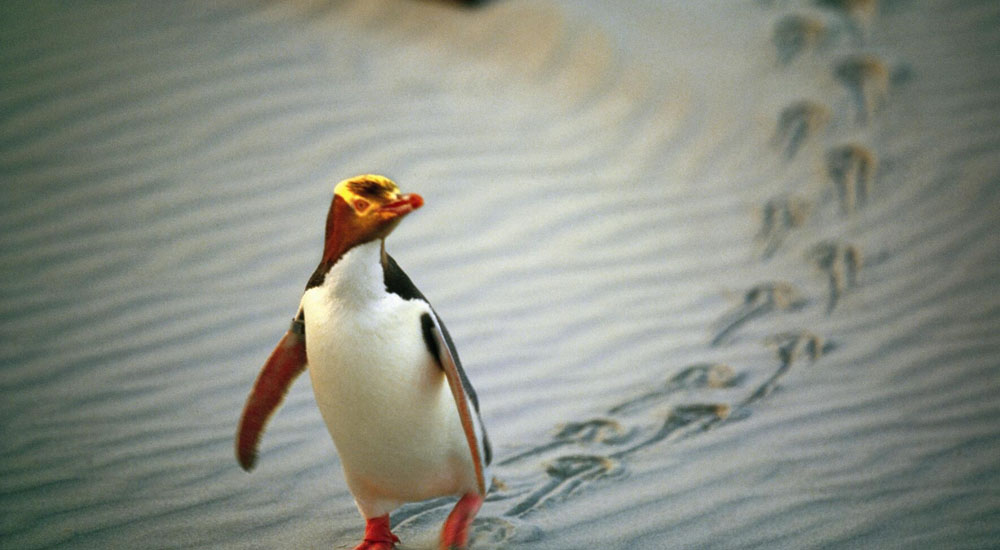
Volunteer at a Wildlife Sanctuary
Now, if you’re truly passionate about New Zealand’s wildlife and want to go beyond just observing, consider volunteering at a wildlife sanctuary. I’ve had the privilege of volunteering at a few sanctuaries throughout the country, and it’s an incredibly rewarding experience. Not only do you get to contribute to the conservation of some of New Zealand’s most precious species, but you also gain a deeper understanding of the challenges they face and the efforts being made to protect them.
For example, check out Pupu Rangi Nature Sanctuary in the North Island (https://www.pupurangi.com/volunteer.html). This incredible place is dedicated to protecting the native New Zealand forest and the creatures that live within it. You can help planting native trees, tracking kiwi, and monitoring bird populations. It was hard work, but incredibly fulfilling to know that I was making a real contribution to the conservation of this special place.
Whether you’re helping to restore habitats, care for injured animals, or educate visitors, volunteering at a wildlife sanctuary is a hands-on way to make a real difference. I’ve spent time planting native trees, building nesting boxes, and even tracking kiwi through the forest. Each experience has been unique and has left me with a profound sense of connection to the natural world.
There are many different sanctuaries throughout New Zealand that welcome volunteers, so you can find one that aligns with your interests and skills. It’s a fantastic way to give back to the environment, learn new things, and meet like-minded people who share a passion for conservation. If you’re looking for a truly meaningful travel experience, I highly recommend volunteering at a wildlife sanctuary. It’s a chance to leave a positive impact on New Zealand’s incredible biodiversity and create lasting memories that will stay with you long after you’ve returned home.
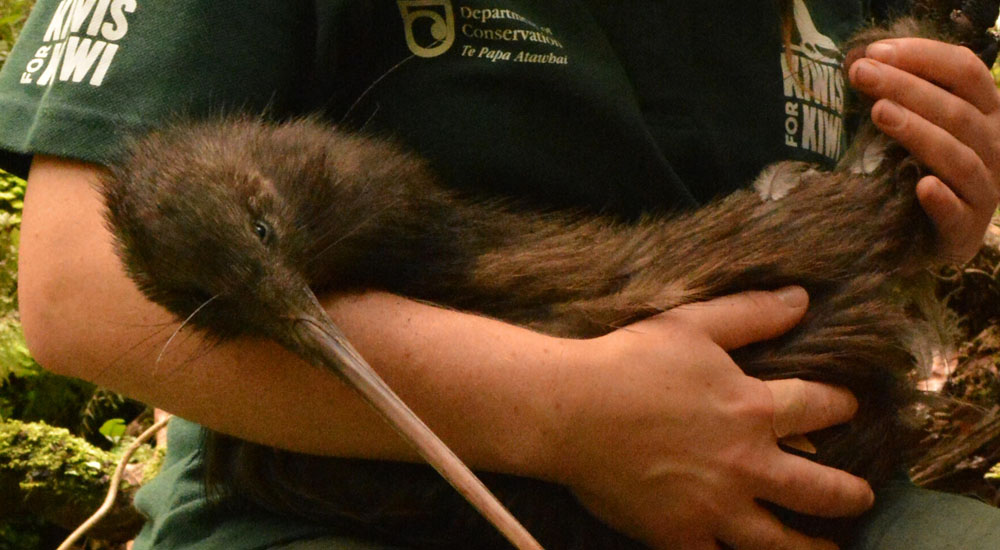
Choose Eco-Tourism Operators
When it comes to experiencing New Zealand’s wildlife, I always encourage people to choose eco-tourism operators who are committed to doing things the right way. These are the operators who prioritize the well-being of the animals and their environment, and they’re the ones I feel good about supporting. They go above and beyond to minimize their impact, and they often educate visitors about the importance of conservation, which I think is fantastic.
You can usually spot these eco-friendly operators by looking for certifications from organizations like EarthCheck or the Sustainable Tourism Accreditation Program. I also recommend doing a bit of research online to find out about their specific practices. Don’t be shy about asking questions either – any responsible operator will be happy to tell you about their commitment to sustainability.
Of course, I have to give a shout-out to my own company, The Conqueror Adventures! We’re passionate about showcasing the best of New Zealand’s natural beauty while ensuring that our impact on the environment is minimal. We work closely with local communities and conservation groups to ensure that our tours are sustainable and responsible.
I’ve also had some fantastic experiences with other eco-tourism operators throughout New Zealand. For example, Kaikoura Whale Watch is a company that truly impressed me with their dedication to sustainable whale watching practices. They have a strong track record of environmental protection and really prioritize the welfare of the whales. Another great example is Abel Tasman Eco Tours, who offer a variety of eco-friendly activities in the Abel Tasman National Park, from kayaking and hiking to sailing.
By choosing eco-tourism operators, you’re not just having a great experience, you’re also helping to make a difference. It’s all about supporting those who are working hard to protect New Zealand’s incredible wildlife and natural beauty for generations to come. Let’s all do our part to ensure that these amazing creatures and places remain for others to enjoy!
- Keep Your Distance: Observe wildlife from a safe distance and avoid disturbing their natural behavior.
- Don’t Feed the Animals: Feeding wildlife can harm their health and create dependency.
- Stay on Marked Trails: Avoid trampling vegetation and disturbing habitats.
- Choose Responsible Tour Operators: Support tour operators who prioritize ethical wildlife interactions and conservation.
What is the best time of year to see wildlife in New Zealand
The best time to see wildlife in New Zealand depends on the species you're interested in.
- Spring (September-November): Good for bird watching as many native birds are nesting and raising their young.
- Summer (December-February): Ideal for marine encounters, with whales and dolphins more active in warmer waters.
- Autumn (March-May): Another good time for bird watching as migratory birds return.
- Winter (June-August): You might have a better chance of seeing kiwi at night during this time.
Where can I find information about endangered species in New Zealand?
- The Department of Conservation (DOC) website is a great resource: www.doc.govt.nz
- You can also find information on the websites of wildlife sanctuaries and conservation organizations.
How can I contribute to wildlife conservation in New Zealand?
- Volunteer: Many wildlife sanctuaries and conservation organizations welcome volunteers.
- Donate: Support conservation efforts by donating to organizations working to protect New Zealand's wildlife.
- Choose responsible tour operators: Support businesses that prioritize sustainability and conservation.
- Spread awareness: Educate yourself and others about the importance of wildlife conservation.
New Zealand’s wildlife offers amazing opportunities to connect with nature. By respecting the animals and their environment, we can all help protect these precious creatures. So, grab your camera and your sense of adventure, and get ready to experience the best of New Zealand’s wildlife!
You Might Also Like…
The Best Winter Activities in New Zealand
Experience the magic of a New Zealand winter! From skiing and snowboarding to soaking in hot springs and witnessing the Southern Lights, discover unforgettable winter activities and destinations.
The Best Outdoor Activities in Fiordland National Park
Discover the magic of Fiordland National Park, a World Heritage wilderness of towering fiords, cascading waterfalls, and pristine lakes. Explore Milford Sound, Doubtful Sound, and hidden gems on unforgettable adventures.
The 5 Best Scenic Road Trips in New Zealand
Experience the beauty of New Zealand with these 5 unforgettable scenic road trips. Discover stunning landscapes, hidden gems, and unforgettable adventures on the open road.
25
years of
Why Travel With The Conqueror Adventures
When it comes to embarking on extraordinary journeys, you have a choice. So why choose The Conqueror Adventures? Our unwavering commitment to redefining adventure travel sets us apart. We don’t just offer hiking tours; we offer experiences that challenge limits, ignite curiosity, and foster meaningful connections.
Our meticulously crafted adventures are designed to leave a profound and lasting impact, pushing you to step boldly into the uncharted. Discover why adventurers around the world choose to explore with us, and join our global community of explorers, wanderers, and adventure enthusiasts. Your extraordinary journey starts here.

